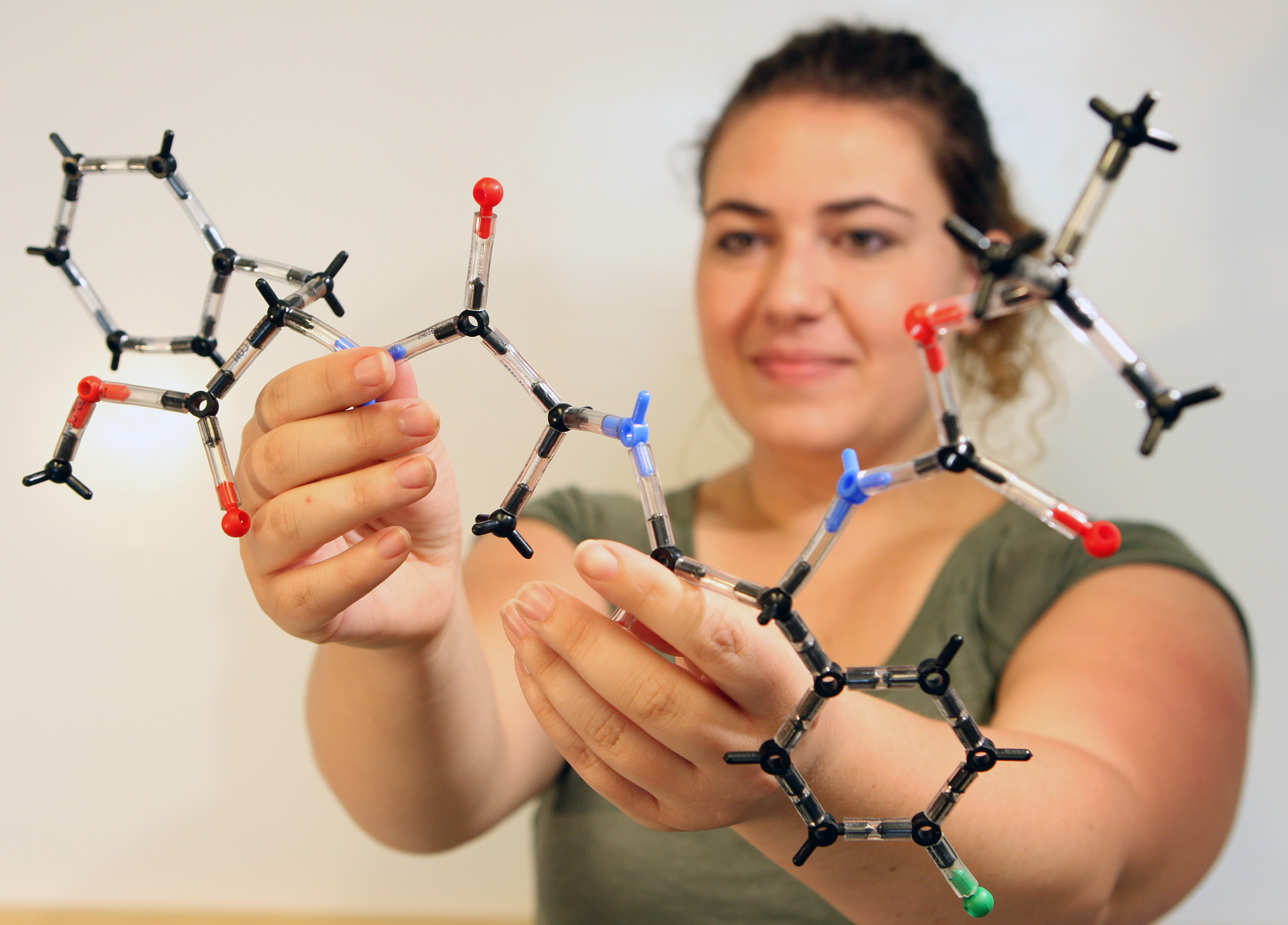
A team of Vanderbilt chemists has developed a novel method for chemically synthesizing peptides that promises to lower the cost and increase the availability of drugs based on natural compounds.
The new synthesis technique is described in a paper published in the June 24 issue of the journal Nature.
Peptides are polymers made by stringing together two or more amino acids, the chemical building blocks of life, in a linear chain and folded into a globular form. DNA holds the blueprints for 20 “standard” amino acids, which cells use for manufacturing proteins—peptides that perform basic cell functions. However, cells also create peptides that contain “non-natural” amino acids for a variety of different purposes by modifying standard peptides after they are produced.
The pharmaceutical industry has a growing interest in using peptides and proteins as therapeutic agents because they have highly specific biological activity associated with low toxicity. However, peptide-based drugs currently make up only a few percent of the total pharmaceutical market. The vast majority of the drugs on the market today are “small molecule” drugs that are synthesized completely in the laboratory.
“Scientists from many disciplines have sought improved methods to streamline the synthesis of peptides through purely chemical means in order to increase the diversity of the chemical tools available for the design of improved therapeutics,” says Professor of Chemistry Jeff Johnston, who directed the effort. “Our discovery of a conceptually new approach to peptide synthesis brings this capability much closer to reality.”
In the last 40 years, peptide synthesis has become highly automated. Peptide synthesis machines are widely used in research laboratories around the world. However, these machines are limited to building molecules from standard amino acids and are best suited for making relatively small peptides.
[rquote]The new approach addresses one of the key limitations of current methods of peptide synthesis—the difficulty of incorporating non-natural amino acids.[/rquote] That is one reason why most current pharmaceuticals based on “biologics” include active ingredients extracted from cells grown by the relatively difficult and expensive fermentation process instead of being synthesized “from scratch” in the laboratory.
The Vanderbilt process—developed by graduate students Bo Shen, who is now at Massachusetts Institute of Technology, and Dawn Makley—makes it much easier to create peptides that incorporate non-natural amino acids.
Another advantage of Johnston’s technique is controlling the “handedness”—or chirality—of the molecules it creates. Most biological molecules, including amino acids, typically come in two versions—right-handed and left-handed—which can have significantly different biological activities. Cells generally create and use left-handed peptides. Controlling handedness in traditional methods of peptide synthesis requires adding a number of additional steps, which substantially reduces the overall efficiency of the synthesis. The new method significantly streamlines this process.
“Our method complements conventional peptide synthesis like the helicopter complements conventional jet transport,” Johnston says, “If you wish to get from one major city to another quickly, the jet is your best option. But if you want greater diversity in destinations, the helicopter is your ticket. I must admit, however, that we have plans for a version of our chemistry comparable to the tilt-rotor Osprey that combines the advantages of helicopter and fixed-wing aircraft.”
The research was funded by grants from the National Institutes of Health and the Vanderbilt Institute of Chemical Biology.
Note: A multimedia version of this story is available on Exploration, Vanderbilt’s online research magazine.